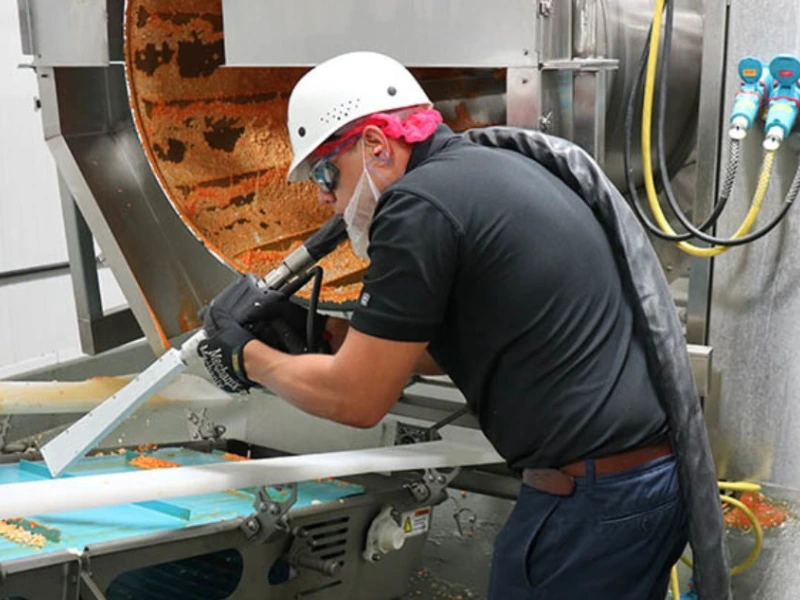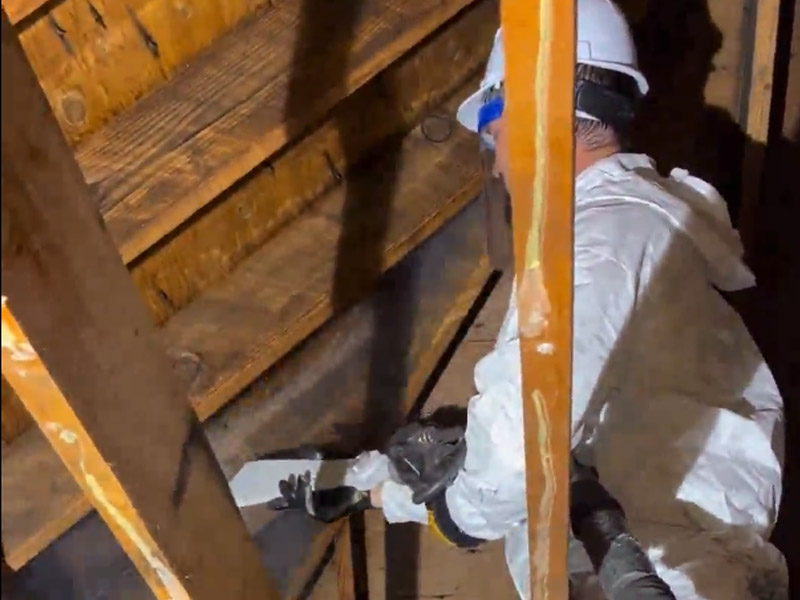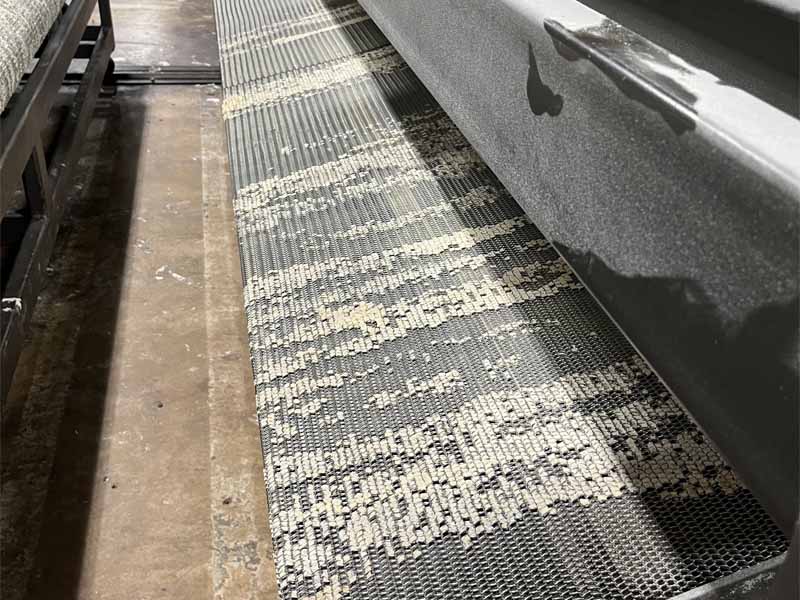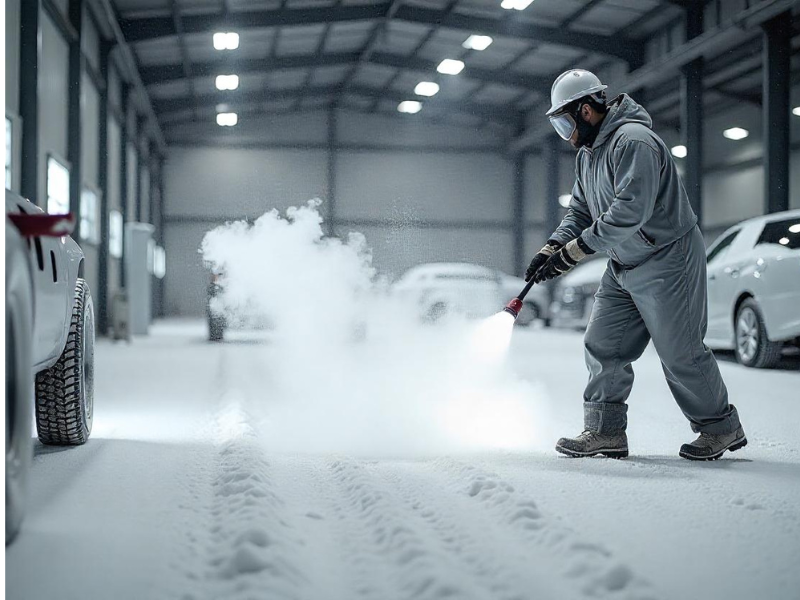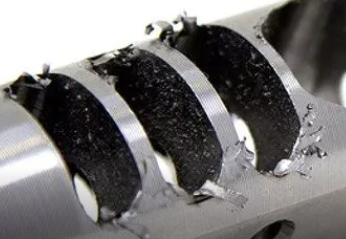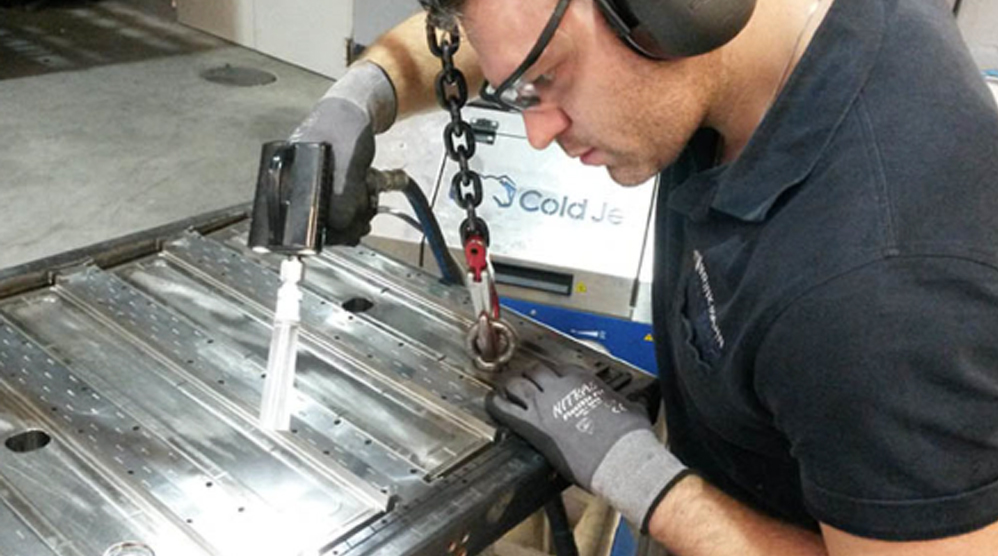The Ultimate Solution Against Microbial Growth, Biofilms, Allergens & Mold
In the highly regulated world of food processing sanitation, cleanliness isn’t just about appearances — it’s about compliance, safety, and product integrity. One of the most powerful and efficient tools gaining traction in the industry is dry ice blasting. This eco-friendly, non-abrasive cleaning method goes far beyond surface-level cleaning, by targeting microbial contamination, biofilm removal, allergen control, and mold remediation.
What Is Dry Ice Blasting?
Dry ice blasting, also known as CO₂ blasting, is a non-toxic cleaning process that uses compressed air to accelerate dry ice pellets (solid CO₂) at high speeds. When the pellets hit a contaminated surface, they create a triple cleaning effect:
- Thermal shock instantly freezes contaminants and films containing microorganisms causing them to crack
- Kinetic energy The combination of accelerated dry ice rice rice and compressed air blasts away the loosened debris and contaminants.
- Sublimation (the solid CO₂ instantly turning into gas) occurs explosively as the pellet releases 800 times its volume in CO₂ gas upon impact. This lifts and carries particles away, leaving a dry and residue-free surface.
Dry Ice Blasting as the “Dry Cleaning” alternative to traditional cleaning and sanitation methods
Because dry ice is composed of CO₂, it introduces no water into the plant’s operations during the cleaning process. Cleaning with dry ice mitigates three important problems associated with traditional cleaning methods.
- Water Consumption: Cleaning and Sanitation can account for 40% of water consumption in food processing plants. Not only does this impact sustainability, but as water costs continue to rise, such usage rates become expensive.
- Bacterial and Mold require water to grow: Using water as the basis for cleaning reintroduces moisture to the plant environment. This requires sanitizing chemicals be employed to beat down bacteria and mold growth that can result from the cleaning process itself. Less water means less opportunity for microbial growth
- Microbial and Allergen Spread: Water administered through hoses and pressurized streams serves as a vehicle to spread microbes and allergens from contaminated areas to adjacent areas through aeroslizing, droplet spread, and pooling. Dry Ice Blasting freezes contaminants. The resulting micro debris drop due to gravity, rather than getting carried away in solution as part of a water stream or spray. Additionally, the CO₂ gas that results from blasting is heavier than oxygen so the CO₂ gas plus the contaminants it contains, drops to the floor rather than remaining airborne and eddying through the building.
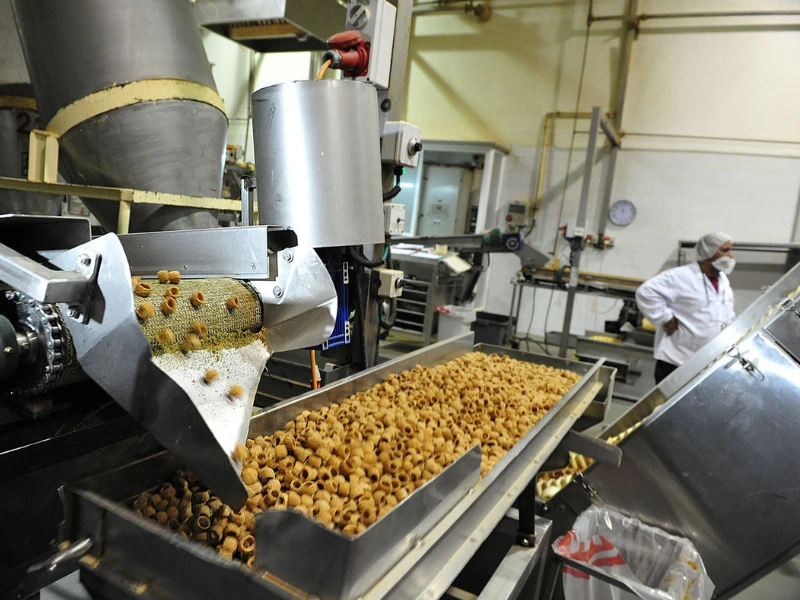
Combating Microbial Growth with Dry Ice Blasting
Microorganisms like Listeria, E. coli, and Salmonella can thrive in food processing environments, especially in hard-to-reach or moisture-prone areas. Unlike water-based cleaning, dry ice blasting kills microbes through rapid freezing and thermal shock — a process that denatures proteins and destroys cell walls.
Benefits for microbial control:
- Inhibits bacterial growth without introducing moisture
- Eliminates hidden microbial colonies (biofilms) in crevices and equipment joints
- Reduces contamination risk posed by chemical residues remaining from other cleaning methods
Say Goodbye to Biofilms
Biofilms are notoriously hard to clean with conventional methods. These sticky, layered colonies of bacteria can form on stainless steel, plastic, and rubber surfaces, acting as a protective shield for harmful pathogens.
Dry ice blasting is highly effective in breaking apart biofilms, thanks to its deep-penetrating cleaning power and ability to reach complex surfaces like:
- Conveyor belts
- Weld joints
- Packaging equipment
- Mixing vessels
Why it works:
- Dry ice penetrates microscopic cracks and crevices
- The blast force physically disrupts the structure of biofilms
- Sublimation lifts the biofilm debris without leaving water or chemical residue
Allergen Control Without Cross-Contamination
In food processing, even trace amounts of allergens (like peanuts, gluten, dairy, or soy) can trigger product recalls and legal liabilities. Traditional cleaning methods often involve water, chemicals, and scrubbing — all of which can spread allergens instead of removing them.
Dry ice cleaning offers precision cleaning with:
- No water, reducing allergen spread through pooling and aerosolizing
- No cross-contamination risk from used brushes or rags
- Targeted particle streams that conform to hard to clean surfaces.
Mold Remediation Without Chemicals
Mold can quickly become a serious health and compliance issue in food processing environments. Mold spores are ubiquitous in all environments and only need moisture and a food source (both plentiful in food processing plants) to grow. Dry Ice Blasting is a moisture free cleaning method for eradicating spores.
Dry ice blasting for mold removal is:
- Non-toxic and residue-free
- Effective against mold spores at the source
- Ideal for cleaning HVAC ducts, ceilings, and behind panels
- Introduces no moisture – denies the spores the water that they need for growth
Ideal Applications in Food Processing Facilities
Dry ice blasting is effective for cleaning:
- Ovens, mixers, and extruders
- Conveyor belts and rollers
- Floors, walls, and ceilings
- Hard-to-reach corners and electrical panels
- Cold storage and refrigeration units
Safe, Sustainable, and FDA-Approve
Dry ice blasting uses food-grade CO₂ that will not negatively affect your ESG performance. Adding Dry ice blasting can actually improve your Environmental score. It meets FDA, USDA, and EPA sanitation standards, making it a compliant, green cleaning solution for food processors.
Key sustainability benefits:
- Reduced water usage
- Reduced chemical usage
- Sustainable – The CO₂ that makes dry ice is recycled CO₂ recovered from other industrial processes. As a result dry ice cleaning finds a second use for an existing industrial output so no new carbon is added to the atmosphere.
- ESG Impact – in addition to reducing water and chemical usage, the CO₂ in dry ice does not count against your plant’s carbon footprint because the recovered CO₂ used to make dry ice has already been accounted for at its source.
Final Thoughts: Clean Smarter, Not Harder
If your food processing facility is still relying on outdated sanitation methods, it’s time to consider an upgrade. Dry ice blasting delivers superior cleaning performance against microbial contamination, biofilms, allergens, and mold — all without water, downtime, or chemical waste.
Ready to level up your food safety protocols? Contact a dry ice blasting service for food processing and ensure your plant meets the highest hygiene and compliance standards.
